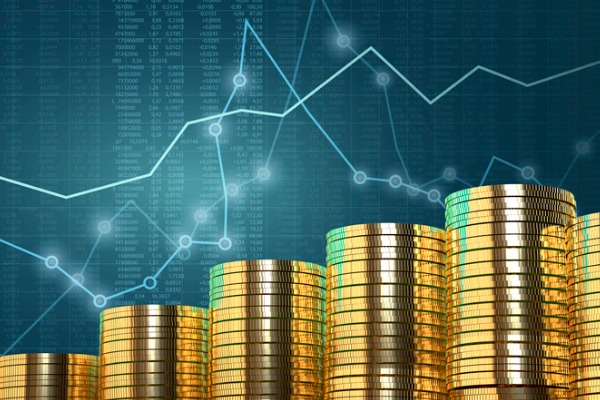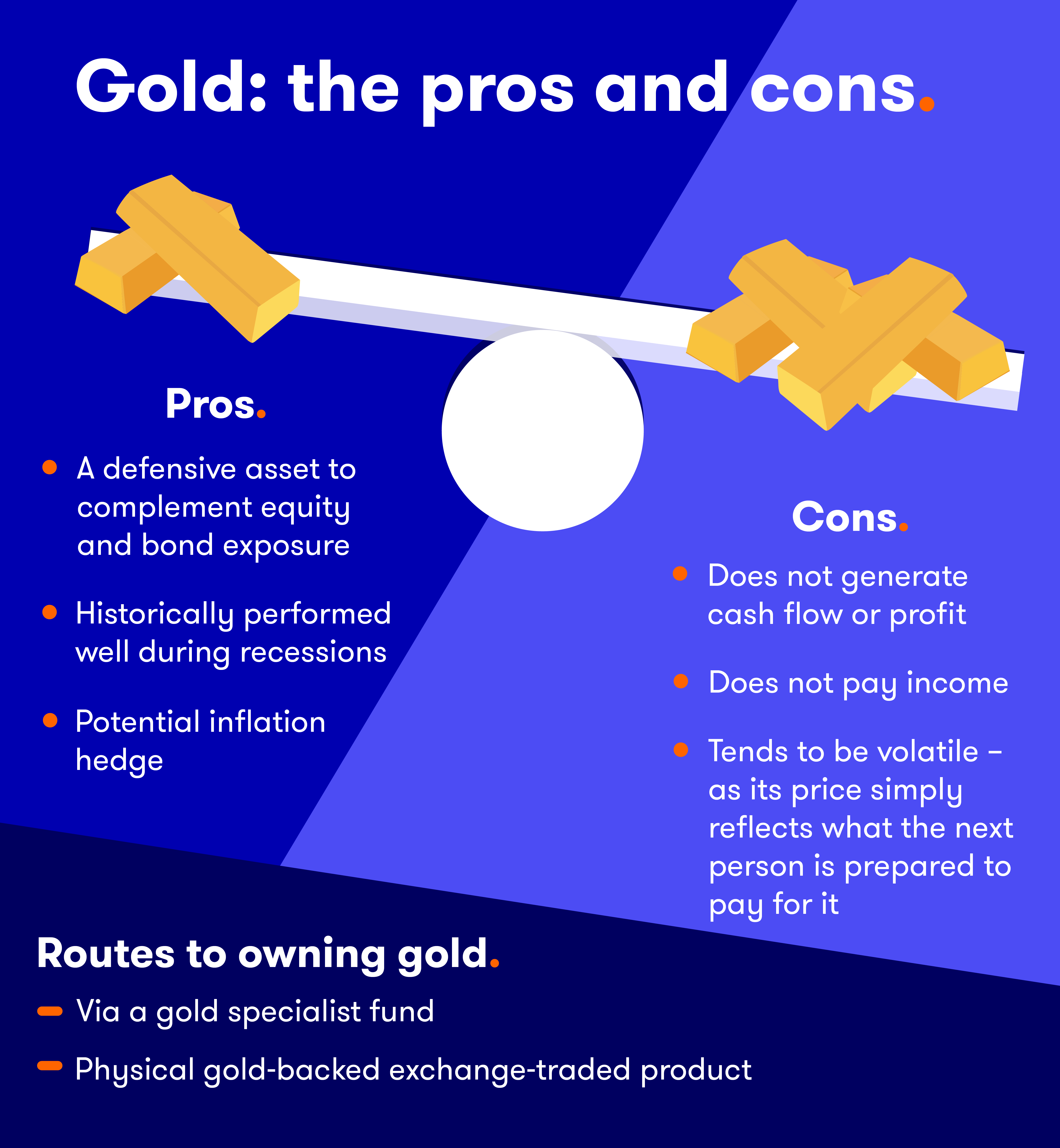What’s behind gold’s 10% rise this year? And the best ways to invest
3rd May 2023 09:59
by Sam Benstead from interactive investor
Gold is trading close to an all-time high of just over $2,000 an ounce. Sam Benstead explains why.

After failing to protect investors last year, as interest rates rose suddenly and stock markets fell, gold has returned to form in 2023, rising more than 10% in US dollar terms and 6% in sterling (a stronger pound decreases the return of dollar-denominated assets, such as gold).
Trading at around $2,000 an ounce, the precious metal has rebounded around 20% since last October, owing much of its rise to lower inflation in America, and expectations that interest rates are close to peaking. It is now in touching distance of its all-time high, reached in August 2020, of $2,069 an ounce.
- Invest with ii: Share Dealing with ii | Open a Stocks & Shares ISA | Our Investment Accounts
More than “fear” in financial markets and demand for so-called safe havens, the gold price moves the most on interest rate expectations.
This is because interest rates affect the yield on offer from the other key safe-haven assets: bonds issued by the US and UK governments. Because gold pays no income, it becomes relatively less valuable when interest rates (and bond yields) rise, meaning that its price is often inversely correlated to moves in interest rates. Investors can now get around 4% annually from lending to the US and UK governments, whereas two years ago the return was closer to 1%.
When rates were rising quickly in 2022, catching investors out, gold fell suddenly. However, now that investors expect central banks to rein in rate rises, gold has recovered.
- Gold and commodity funds back in form
- Fundsmith buys world’s largest consumer goods company – again
- Nine gold mining shares that could add sparkle to your ISA
Ned Naylor-Leyland, manager of the Jupiter Gold & Silver fund, says: “Central banks have raised rates sharply and express unwavering commitment to tighter monetary policy.
“My view is that banks, including the US Federal Reserve, will have to reverse course and loosen rates — which would be supportive of gold. In fact, there’s a battle going on over the narrative for monetary policy.
“Financial markets are suggesting that central banks will have to begin easing this year as recession takes hold, while central banks are saying they’re going to keep on tightening to finish off inflation.”
More than just an interest rate trade
Another factor behind the strong gold price has been the difficulties in the banking sector, as well as the failure of many cryptocurrency exchanges.
When investors lose faith in institutions, and are generally fearful, they are drawn to gold, which is viewed as a safe haven. This was the case following the collapse of Silicon Valley Bank in the US and Credit Suisse in Europe.
Doubts around the stability of Bitcoin and other cryptocurrencies, which for some are considered a digital store of value, grew following the collapse of brokerage FTX, as well as lender to the crypto economy Silvergate Bank.
Central banks buying gold has also driven up the price of the precious metal. Naylor-Leyland says that central banks have been increasing their gold holdings and now some of the world’s most important central banks hold a significant proportion of their total reserves in gold.
“According to the World Gold Council, central bank demand for gold more than doubled in 2022 to 1,136 tons – the most since 1967 — from 450 tonnes the year before. Purchases in quarter four 2022 were 417 tonnes and in the second half of last year it totalled more than 800 tonnes. Turkey, China, Egypt and Qatar were among the biggest buyers, based on the data available,” he said.
- The ‘unique’ investment that protects against inflation
- Seven biases that could be hitting your investment returns
Bank of America adds that persistent central bank purchases have been a defining feature of the gold market in recent years.
“Interestingly, three energy-exporting nations (Qatar, Iraq and the United Arab Emirates) have been among the top 10 official gold purchasers as of late. Given elevated energy prices recently, this is not necessarily a surprise. Terms of trade, current account balances and ultimately gold prices are all interconnected.”
The analyst’s gold supply and demand pricing model suggests that investor purchases need to increase only slightly for prices to push higher, assuming that central banks keep boosting their gold holdings and there are increases in assets under management at physically backed exchange-traded funds (ETFs).
Why buy gold – and how
One high-profile gold investor is Personal Assets Trust, a wealth preservation vehicle managed by Sebastian Lyon. It has around 10% of its mixed asset portfolio in gold.
Lyon said: “Gold has a role in a negative real interest rate world (where interest rates are below the inflation rate). We have been in this world since the financial crisis. It spiked up last year when inflation was high and rates were well below the inflation rate. If you live in a world of sound money, when rates are well above the inflation rate, then you don’t need to own gold because you aren’t in an era of currency debasement.
“But since the financial crisis and quantitative easing, gold has a bigger role as it offers protection. We saw this in 2020 in the pandemic. We saw it in the invasion of Ukraine – it did well in a very difficult period. And in the first quarter of this year it has done very well. It is near to an all-time high in dollars, which is one of the few things that is. We hold it as a good diversifier. Gold does a very good value job of providing protection, especially in a world of greater geopolitical and sovereign risk, where investors can lose faith in governments.”
Lyon owns gold bars stored with JP Morgan, but retail investors are better served by buying an exchange-traded fund that owns physical gold bars. The iShares Physical Gold ETC GBP is on the interactive investor Super 60 list of investment ideas. There is also a currency hedged version as well, so movements in the pound/dollar exchange rate do not affect performance.
Dzmitry Lipski, head of funds research at interactive investor, said: “This is a soundly constructed fund with low fees leaving it well positioned to provide good risk-adjusted returns relative to peers over the long term. This is an inexpensive fund tracking a well-defined benchmark.”

These articles are provided for information purposes only. Occasionally, an opinion about whether to buy or sell a specific investment may be provided by third parties. The content is not intended to be a personal recommendation to buy or sell any financial instrument or product, or to adopt any investment strategy as it is not provided based on an assessment of your investing knowledge and experience, your financial situation or your investment objectives. The value of your investments, and the income derived from them, may go down as well as up. You may not get back all the money that you invest. The investments referred to in this article may not be suitable for all investors, and if in doubt, an investor should seek advice from a qualified investment adviser.
Full performance can be found on the company or index summary page on the interactive investor website. Simply click on the company's or index name highlighted in the article.